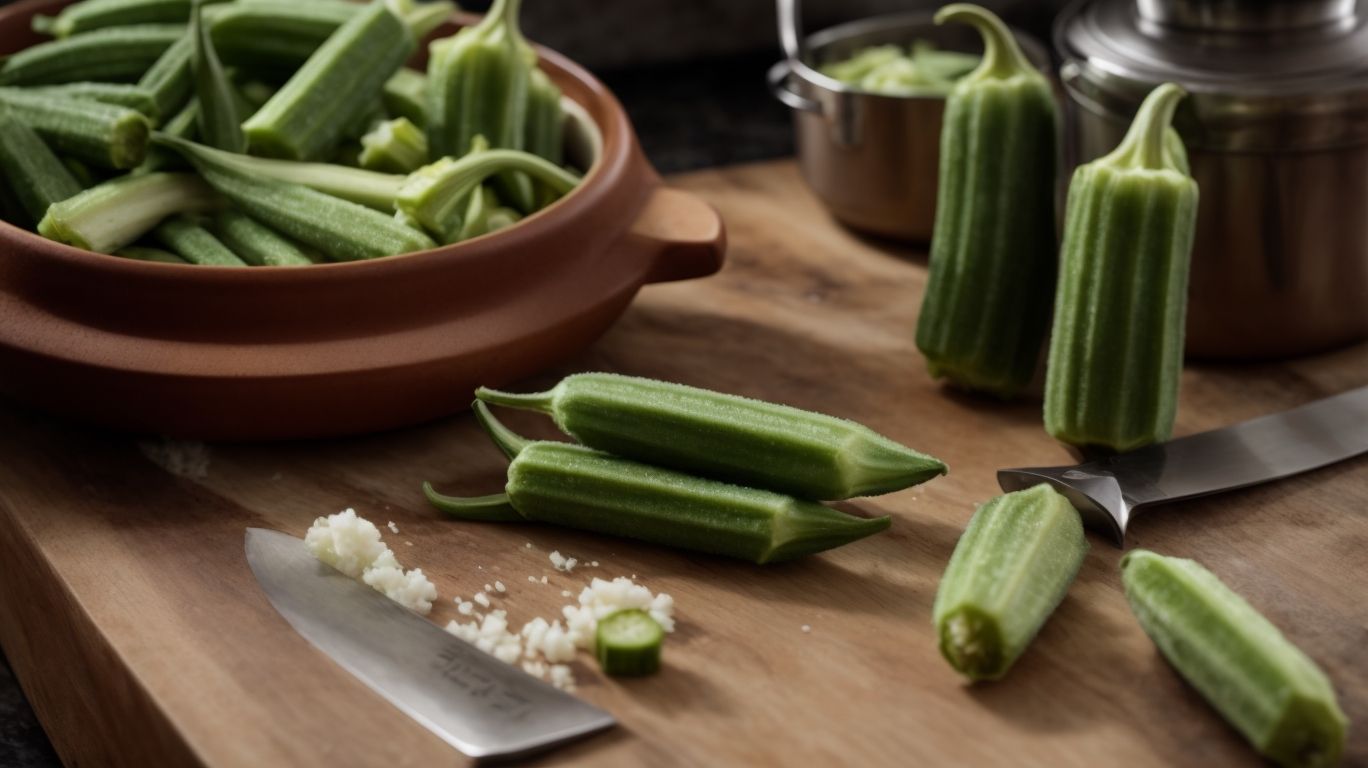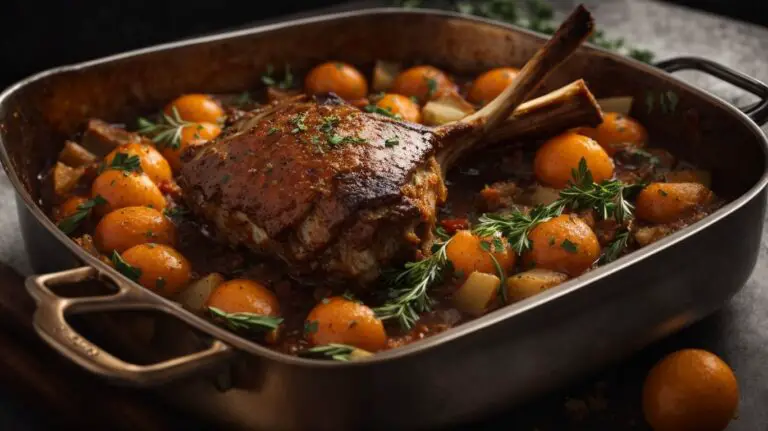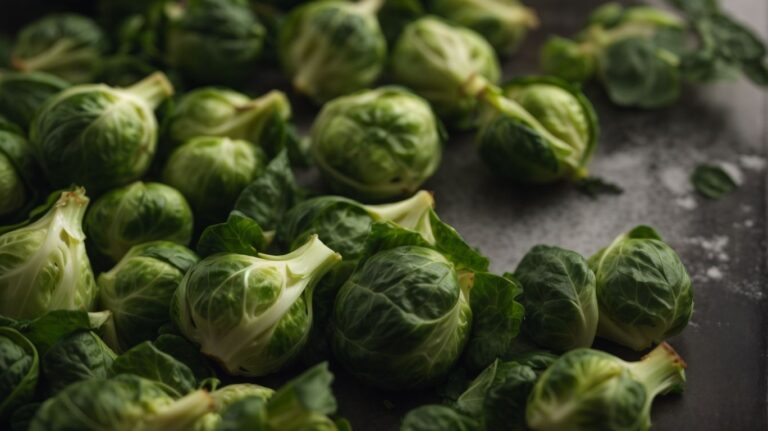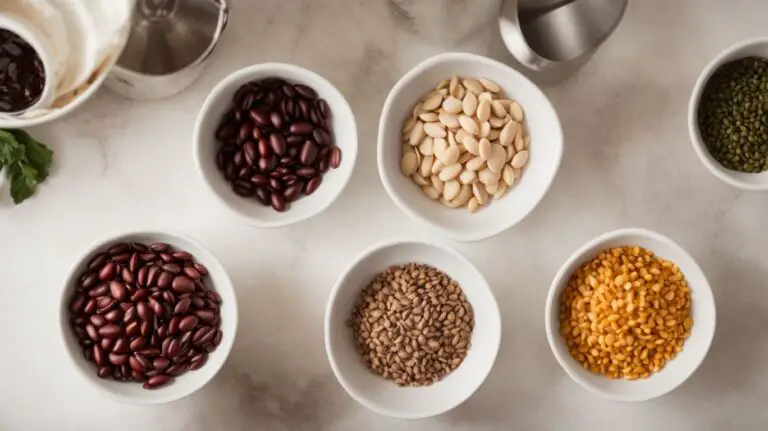How to Cook Frozen Okra Without the Slime?
Do you enjoy okra but dislike its slimy texture when cooked? Frozen okra could be the solution you need.
We will discuss what okra is, the benefits of choosing frozen okra, and how to prepare and cook it without the unwanted slime.
Learn about different cooking methods like roasting and sautéing, along with tips for reducing slime, so you can enjoy your okra dish without any unpleasant texture.
Stay tuned for some slime-free okra goodness!
Key Takeaways:
What is Okra?
Okra, also known as lady’s fingers, is a green flowering plant valued for its edible green pods that are renowned for their unique slimy texture and distinct mouthfeel.
When cooked, okra releases a mucilaginous sap that contributes to its characteristic sliminess, making it a popular ingredient in soups, stews, and curries across various cuisines.
Aside from its culinary appeal, okra is a nutritional powerhouse, boasting high levels of vitamins C and K, as well as folate and fiber.
In many cultures, okra is not only valued for its taste but also holds symbolic and cultural significance, often appearing in traditional dishes and as a key ingredient in regional specialties.
Why Choose Frozen Okra?
Frozen okra offers convenience and extended shelf life without compromising on flavor or nutritional value, making it a popular choice for individuals seeking a quick and easy vegetable option.
Frozen okra is available year-round, eliminating the seasonal limitations that fresh produce often faces. This ensures that you can enjoy this nutritious vegetable in your favorite dishes anytime you crave it. Another advantage of opting for frozen okra is that it has already been cleaned, trimmed, and cut, saving you precious prep time in the kitchen.
When selecting high-quality frozen okra, look for packages that are free from ice crystals or freezer burn, as these indicate improper storage or long shelf life. Opt for brands that flash-freeze the okra soon after harvest to lock in its freshness and nutrients.
To store frozen okra properly, keep it in the coldest part of your freezer to maintain its quality. Use airtight containers or resealable bags to prevent moisture loss and freezer burn. By following these tips, you can enjoy the convenience and benefits of frozen okra while preserving its taste and nutritional value.
How to Prepare Frozen Okra for Cooking?

Credits: Poormet.Com – Logan Mitchell
Preparing frozen okra for cooking involves thawing the pods and draining excess moisture to mitigate the slimy mouthfeel typically associated with okra.
Thawing Frozen Okra
Thawing frozen okra can be achieved by placing the pods in the refrigerator overnight or using a quick thaw method in cold water for immediate use.
Another effective way to thaw frozen okra is by incorporating it into cooking directly from its frozen state, eliminating the need for thawing in advance. When cooking with frozen okra, ensure to adjust the cooking time slightly to allow for the frozen state of the pods. To preserve the texture and flavor of okra during thawing, avoid using hot water or microwaving as these methods can lead to a mushy consistency. Always follow proper thawing times to prevent bacterial growth and maintain food safety standards when preparing frozen okra dishes.
Draining Frozen Okra
Draining excess moisture from frozen okra after thawing is essential to reduce the slimy mouthfeel and enhance the vegetable’s texture during cooking.
One efficient method to drain okra is by placing the thawed pods on a paper towel-lined plate and gently pressing them with another paper towel on top. This helps absorb excess moisture. Another effective technique is to toss the okra in a colander with a sprinkle of salt and let it sit for a few minutes, then rinse under cold water to remove the sliminess. Ensuring the okra is thoroughly dried before cooking, whether by patting it dry or using a salad spinner, is crucial for achieving a crispy texture.
How to Cook Frozen Okra Without the Slime?
Cooking frozen okra without the characteristic slime can be achieved through various methods such as roasting, sautéing, grilling, and air-frying.
Roasting Frozen Okra
Roasting frozen okra in the oven at high heat can help reduce the sliminess while imparting a delicious char and crispy texture to the pods.
To achieve the perfect roasted okra, start by preheating your oven to 425°F (220°C). While the oven is heating up, take the frozen okra out of the bag and spread it in an even layer on a baking sheet lined with parchment paper. Drizzle some olive oil over the okra to help with the crisping process, and then sprinkle garlic powder, paprika, salt, and pepper for a flavorful twist. Make sure to toss the okra well to ensure even coating. Roast the okra in the preheated oven for about 20-25 minutes, flipping them halfway through to ensure they are evenly cooked and crispy on all sides.
Sautéing Frozen Okra
Sautéing frozen okra in a hot skillet with minimal oil can help retain its natural flavors and reduce the slimy mouthfeel, resulting in a savory and tender dish.
When preparing frozen okra, make sure to thaw it properly before sautéing to prevent excess moisture. Ensure the skillet is hot before adding the okra for a quick sear, which helps seal in the flavors. Season with your favorite spices such as garlic powder, paprika, or cumin to enhance the taste. To further reduce slime, add a splash of acidic ingredients like lemon juice or vinegar. Remember to continuously toss the okra to ensure even cooking and avoid overcrowding the pan.
Grilling Frozen Okra
Grilling frozen okra on a hot grill can impart a smoky flavor and appealing char marks while reducing the slimy texture, creating a delightful and nutritious side dish.
To achieve the best results when grilling frozen okra, it is essential to properly thaw the okra before placing it on the grill. This step helps ensure even cooking and enhances the overall flavor profile of the vegetable. Additionally, seasoning the okra with olive oil, salt, pepper, and a sprinkle of smoked paprika can elevate its taste and complement the smoky char from the grill. Cooking the okra over medium-high heat for 8-10 minutes, turning occasionally, can achieve a perfect balance of crispy exterior and tender interior.
Air-Frying Frozen Okra
Air-frying frozen okra with a light coating of oil can yield a crispy and golden-brown exterior, effectively reducing the slimy mouthfeel and offering a healthier cooking alternative.
Air-frying is a popular cooking method that uses hot circulating air to cook food, giving it a crunchy texture without the need for excessive oil or deep-frying. When preparing frozen okra in an air fryer, ensure to preheat the fryer to the recommended temperature to ensure even cooking.
The beauty of air-frying is that it can create a crispy finish on the okra while retaining its natural flavors and nutrients. You can experiment with various seasonings such as paprika, garlic powder, or cayenne pepper to enhance the taste profile of the okra.
Tips for Reducing Slime in Frozen Okra
To reduce the slimy mouthfeel in frozen okra, consider using acidic ingredients, avoiding overcooking, and cooking the pods in small batches for optimal results.
Use Acidic Ingredients
Incorporating acidic ingredients like lemon juice or vinegar when cooking frozen okra can help neutralize the slimy texture and add a bright, tangy flavor to the dish.
The text is already well-formatted with appropriate HTML tags.
Don’t Overcook Okra
Avoiding overcooking frozen okra is essential to prevent excessive slime production and maintain a firm, yet tender texture in the cooked pods.
When preparing frozen okra, it’s crucial to thaw it properly before cooking to ensure even heat distribution and avoid a soggy outcome. One popular method is to spread the okra on a baking sheet and let it sit at room temperature for about 30 minutes.
For best results, opt for cooking techniques that involve high heat and quick cooking times, such as stir-frying or sautéing. These methods help to sear the okra quickly, locking in its natural flavors and minimizing the slime factor.
When testing for doneness, look for visual cues like the vibrant green color of the pods and a slight caramelization on the edges. Remember, a slightly crunchy texture is preferred over mushy okra.
Cook Okra in Small Batches
Cooking frozen okra in small batches allows for better heat distribution, reduces moisture buildup, and helps control the sliminess, resulting in well-cooked and flavorful pods.
When cooking small portions of frozen okra, it’s essential to select a suitable pan to ensure even cooking. A non-stick skillet or a wide saucepan works best, allowing the okra to spread out in a single layer.
Managing the heat is crucial to prevent the okra from becoming soggy. Start by heating the pan over medium-high heat and add a small amount of oil or butter.
Keep the batch size small, around a single layer of okra, to avoid overcrowding the pan which can lead to steaming rather than roasting or sautéing.
Conclusion: Enjoying Slime-Free Frozen Okra
Mastering the art of preparing and cooking frozen okra without the slimy mouthfeel opens up a world of culinary possibilities, allowing you to savor this nutritious vegetable in delightful ways.
When cooking frozen okra, proper thawing is crucial to maintain its texture and taste. Whether you choose to bake, sauté, or air-fry, experimenting with different methods can yield surprisingly delicious results. By seasoning creatively with herbs and spices, you can enhance the flavor profile and customize the dish to your liking. This versatile vegetable is a great addition to soups, stews, stir-fries, and even salads. Embrace the opportunity to unleash your culinary creativity and transform frozen okra into a star ingredient in your kitchen!
Frequently Asked Questions
What is the best way to cook frozen okra without the slime?
The best way to cook frozen okra without the slime is by using high heat and a dry cooking method, such as roasting or grilling.
Can I cook frozen okra without thawing it first?
Yes, you can cook frozen okra without thawing it first. In fact, it is recommended to cook frozen okra straight from the freezer to avoid excess moisture and slime.
Is it necessary to blanch the okra before cooking it?
No, it is not necessary to blanch the okra before cooking it. Blanching can actually make the okra more slimy, so it is best to skip this step when cooking frozen okra.
How do I prevent the okra from becoming slimy when cooking?
To prevent the okra from becoming slimy, make sure to pat it dry before cooking and avoid using too much oil. Also, be sure to cook the okra at a high heat and avoid overcrowding the pan.
Can I use frozen okra in recipes that call for fresh okra?
Yes, frozen okra can be used in recipes that call for fresh okra. Just be sure to adjust the cooking time accordingly, as frozen okra may cook faster than fresh okra.
Are there any other tips for cooking frozen okra without the slime?
Yes, you can also try coating the okra in cornmeal or flour before cooking, as this can help absorb excess moisture and prevent slime. Additionally, adding acidic ingredients, such as lemon juice or vinegar, to the dish can also help reduce slime.







